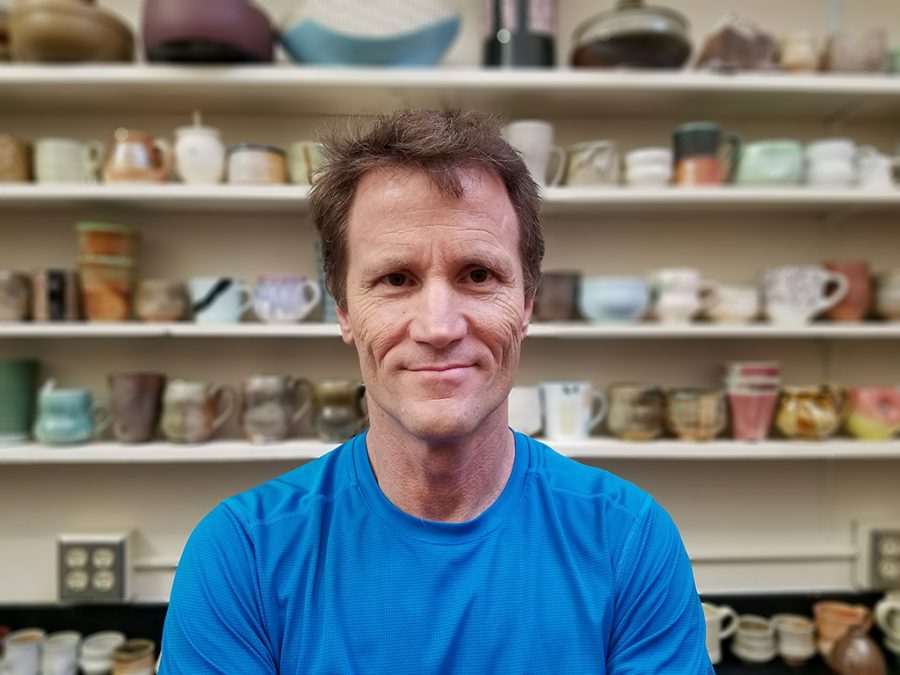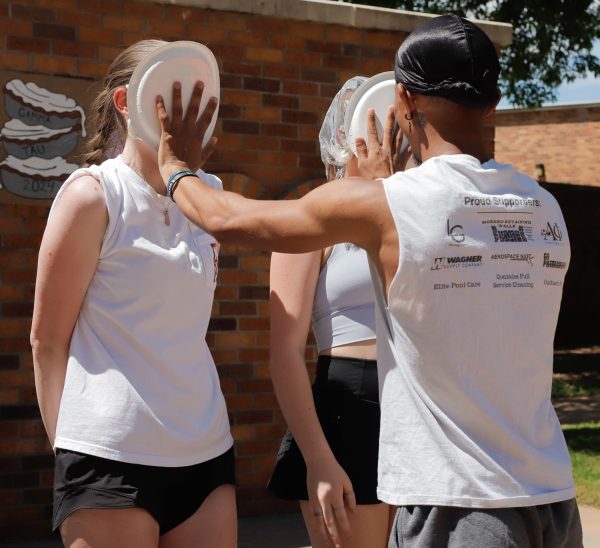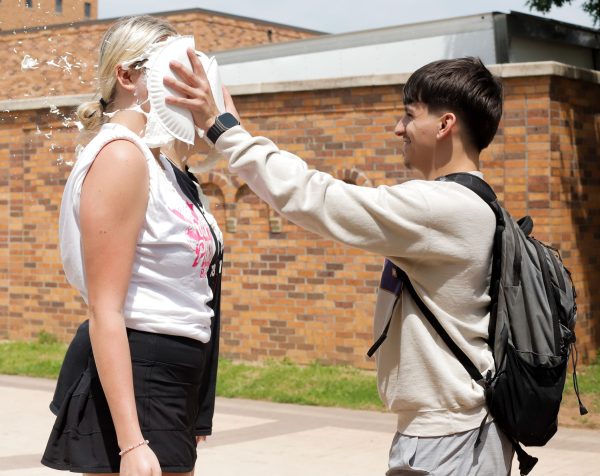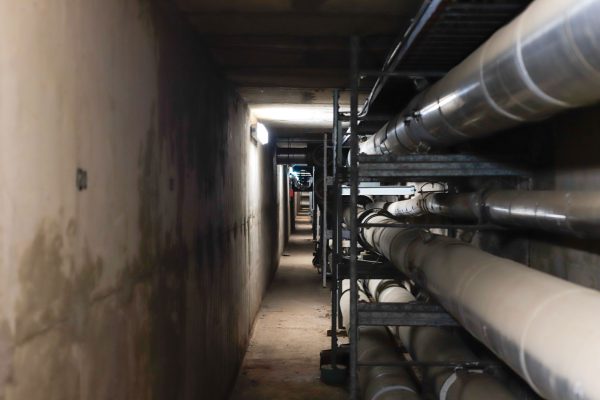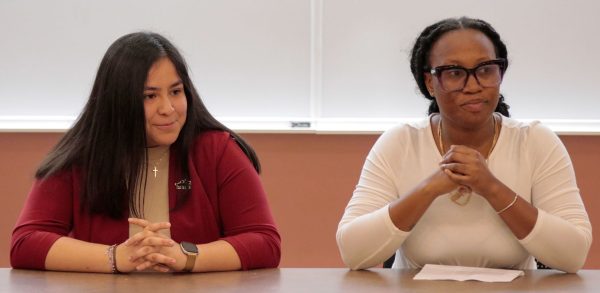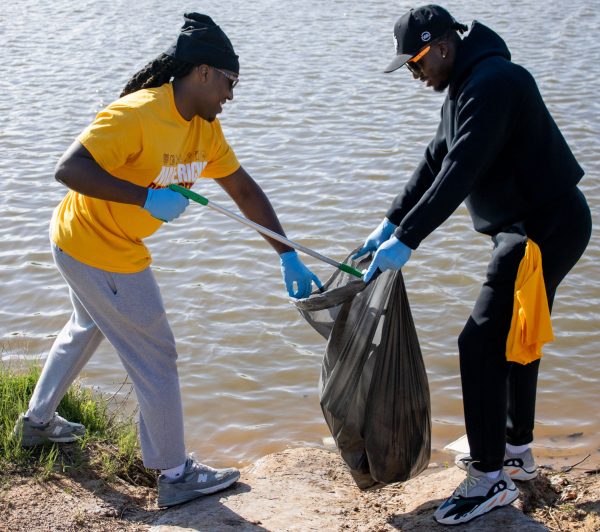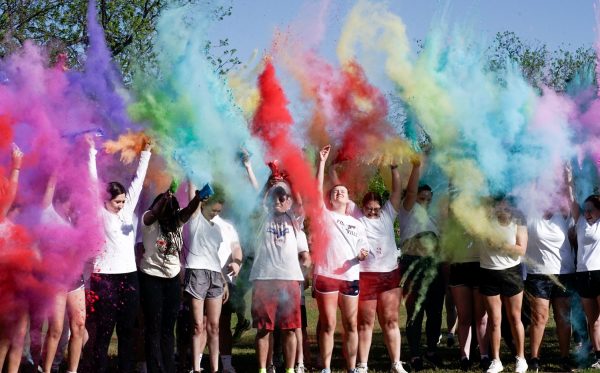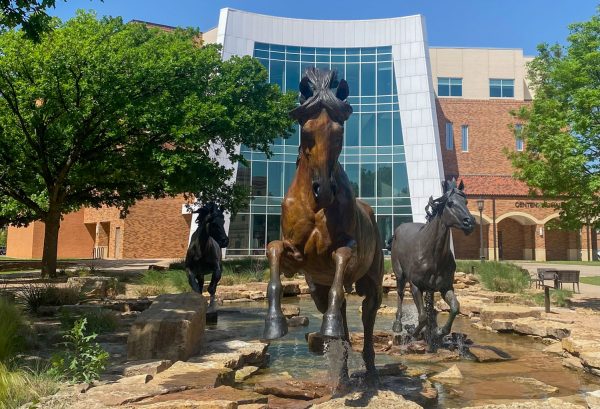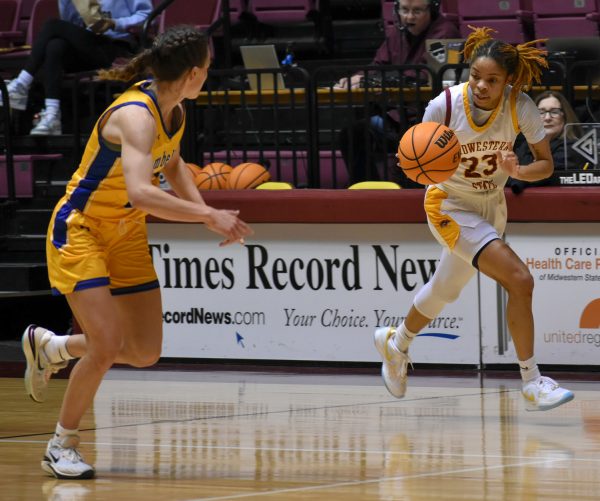“The students have humanized themselves to me”
A day in the life of Steve Hilton
One hundred and eighty-one. That’s how many steps Professor Steve Hilton takes to get to work in the morning.
As faculty-in-residence, Hilton lives on campus in Legacy Hall. He wakes up to his four-and-a-half-year-old son, Wes, giving him his morning kiss, they have breakfast, coffee and ride their scooters to take him to school.
“When I have coffee, [that’s] my favorite time of the day,” Hilton said, “And it is funny because when I have coffee I’m with my family. It is a ritual. I have this really nice espresso machine and I’m hanging out with my wife and little boy and sometimes my wife has a coffee too, and my son is dipping his finger in my latte and making his own latte art.”
After dropping his son off at school, he goes to the ceramics studio in the Fain Fine Arts building. He spends a large portion of his day working on his own projects and helping students with theirs–whenever he’s not teaching, that is. Tuesdays and Thursdays Hilton teaches ceramics and art education. He doesn’t have a favorite class to teach, but there is one that he said makes a bigger impact on people. My son gets to hang out with 500 brothers and sisters, and he’s seeing education as something that’s really important. — Hilton
“I love teaching art education because I get to make a big difference in a lot of people’s lives. So it’s not just like I’m making a difference in my students’ lives, I’m hoping that I’m making a difference in all of their student’s lives,” Hilton said. “If you were to ask me what my favorite class is, a better question would be what’s a class that you think you’re doing more for the world, more for humanity?”
He has a break between noon and 1 p.m. to eat lunch with his son and his wife, Alissa, and has another break for dinner at around 5 or 6 p.m.
“I’m really fortunate in that I get to eat at least two meals with my wife and all three meals every day with my son,” Hilton said, “I’m so lucky because not many dads get to do that.”
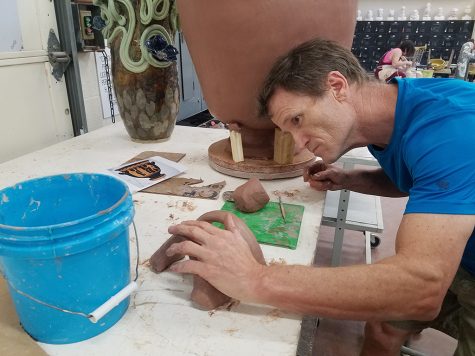
After dinner, he spends time with his son, and after his wife and son go to bed at 7:30 to 8:30, he returns to the ceramics studio until around midnight. Hilton said the work he does is how he relaxes.
“I’m wound up when I’m not doing something,” Hilton said. “When I’m just sitting around that’s when I wind up. I unwind by doing what I do.”
Bailey Pitzer, art education senior and Hilton’s student assistant, explained that Hilton doesn’t stop teaching after class is over.
“He’s very dedicated to his job,” Pitzer said. “He spends a lot of time in the studio outside of class time. Anytime that he’s not with his family, he’s up here helping us and making sure that we’re taken care of, which is really cool. He’s also working on his own projects a lot, too, which is inspiring to his students.”
Hilton said he became the faculty in residence because he and his wife had witnessed it at work in California and liked the idea of it.
“Faculty living on campus is something that started I think on the west coast,” Hilton said, “They were having trouble recruiting faculty because it was so expensive to live in San Fransisco or Los Angeles so they started putting faculty in residence halls. It made sense because there were mentors living with students, it makes sense.”
As faculty in residence, Hilton helps organize events for the Living-Learning Programs. Events such as the “Get on the Bus” trip, where they take students on a trip somewhere, but the students don’t know where they’re going until they get there. They simply get on the bus and see where they end up.
Hilton said the only bad thing about living on campus was they didn’t have consistent hot water for their first year and a half. Other than that, he said he could only think of positive things. Living as close as he does, he can get to the ceramics studio in about 45 seconds whenever a student might need his help. He also has the opportunity to spend time with students even when he’s not working, something that he said positively affects his son as well.
“My son gets to hang out with 500 brothers and sisters, and he’s seeing education as something that’s really important. He sees it through the eyes of all these students who are studying and he sees the work that they do,” Hilton said.
Norma Ramirez, assistant director of residence life and housing, has gotten to know Hilton and his family through her time as Legacy Hall’s hall director. They collaborate together on the events and activities they plan for the LLPs. She said one of the things that stands out to her about him is how engaging he is.
“So at first when he became the faculty in residence I didn’t know what to expect and for him,” Ramirez said. “He’s really done a good job and what makes him unique is he’s so genuine, personable and he’s way creative. He [also] takes an interest in students in a different lens. And that’s what I really appreciate. Any time he can do a program, some type of event, some type of service or volunteer opportunity that he can do to engage residents, he’s going to do it and he’ll do it 110 percent.”
Despite Hilton’s proximity to students, he said that he sees their type of busy as different from his own. He does, however, acknowledge the work that they do, and he said that he sees them differently than he did before.
“When I took this job, I used to say that my job was to humanize the professorial,” Hilton said, “To humanize myself and to show students that I wear soccer shorts and I hang out with a little kid and I ride a scooter and you know I’m just a normal person, right? But now I often say that the students have humanized themselves to me. I see what’s happening over there and how it affects what might happen in my classroom and so that’s changed my perception.”



